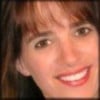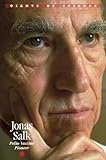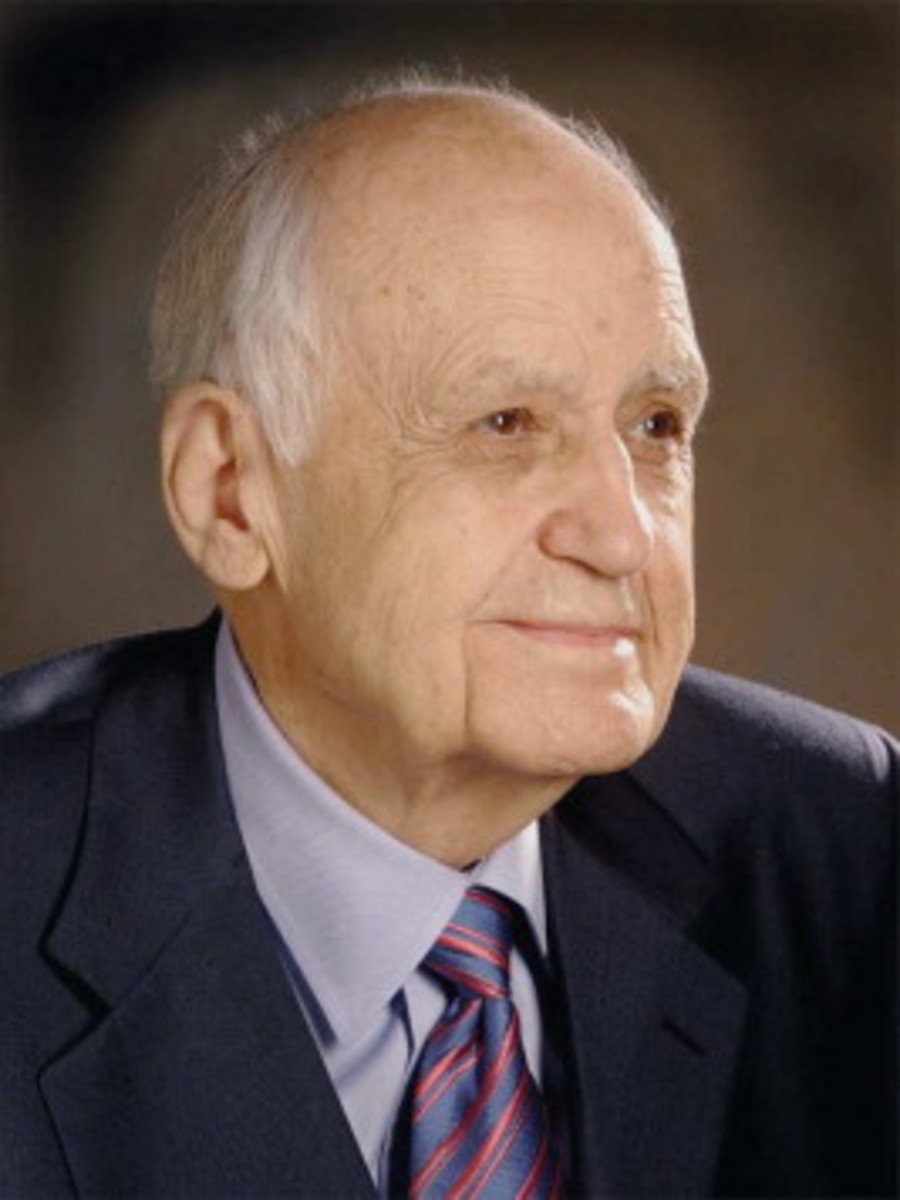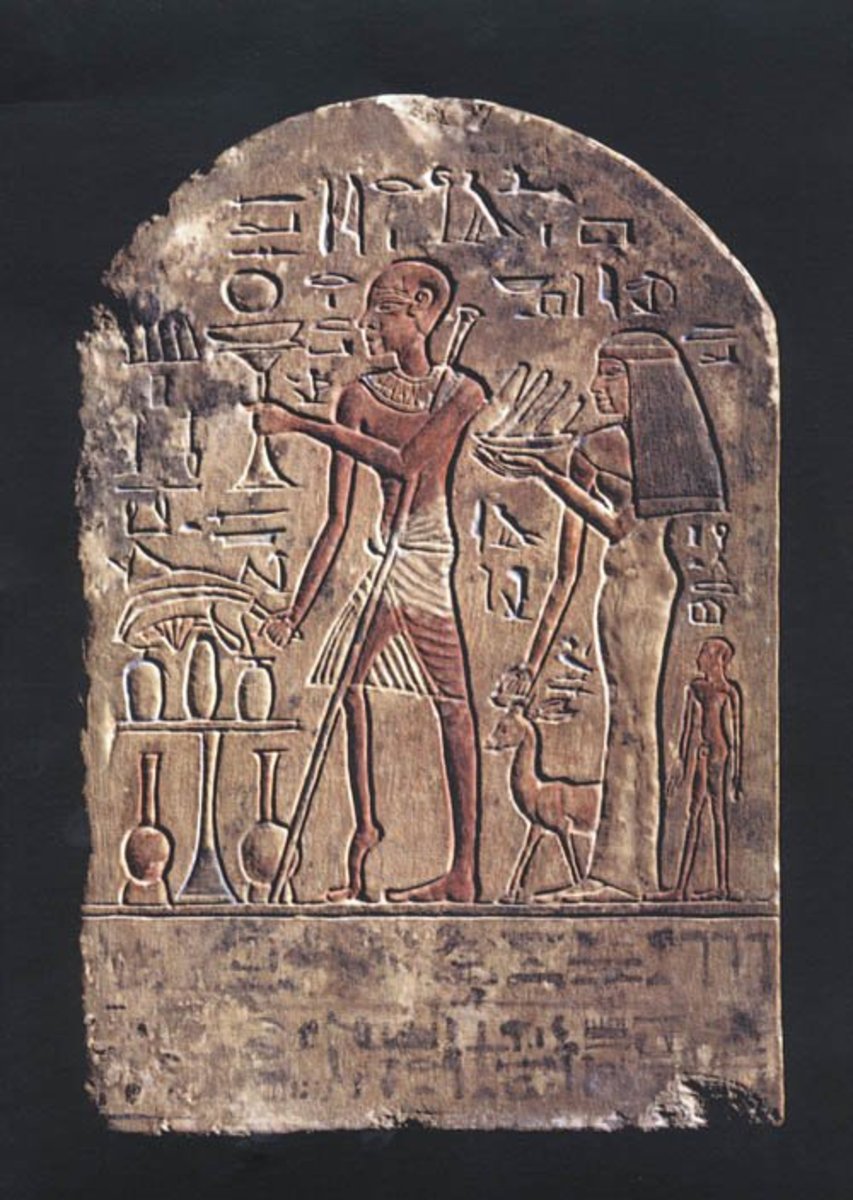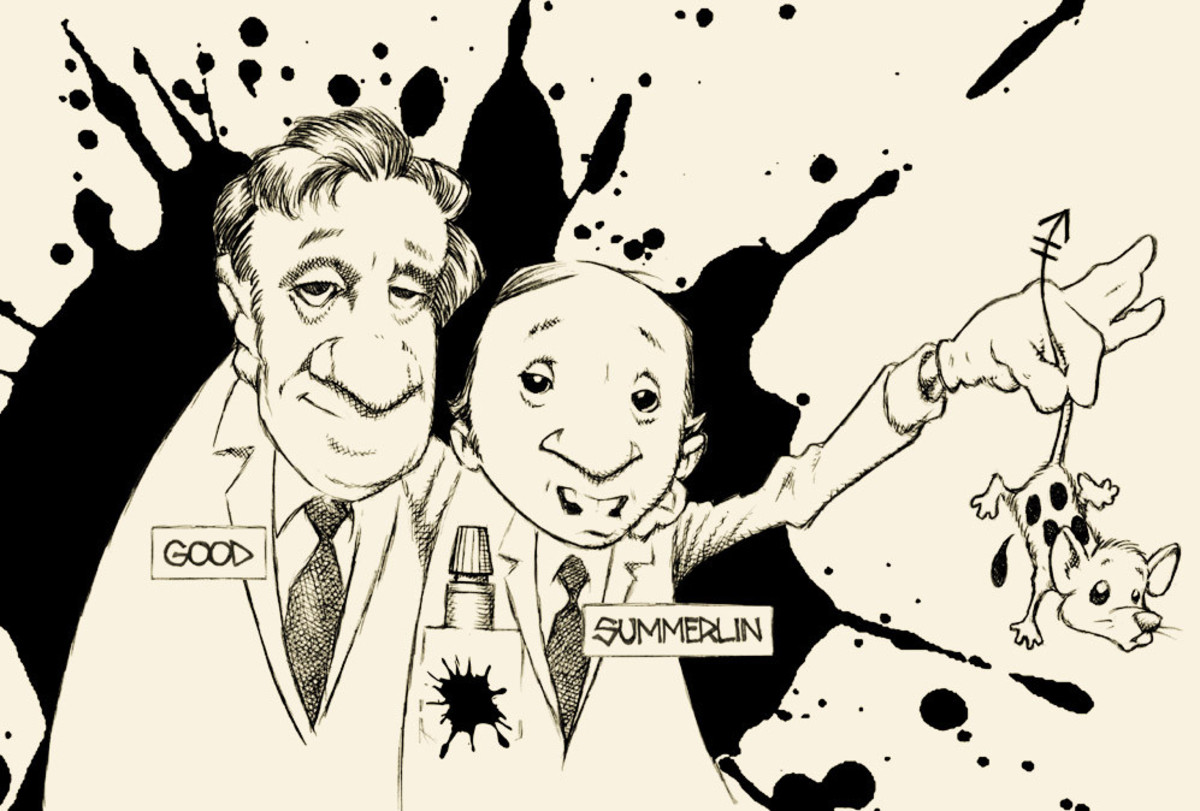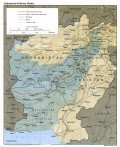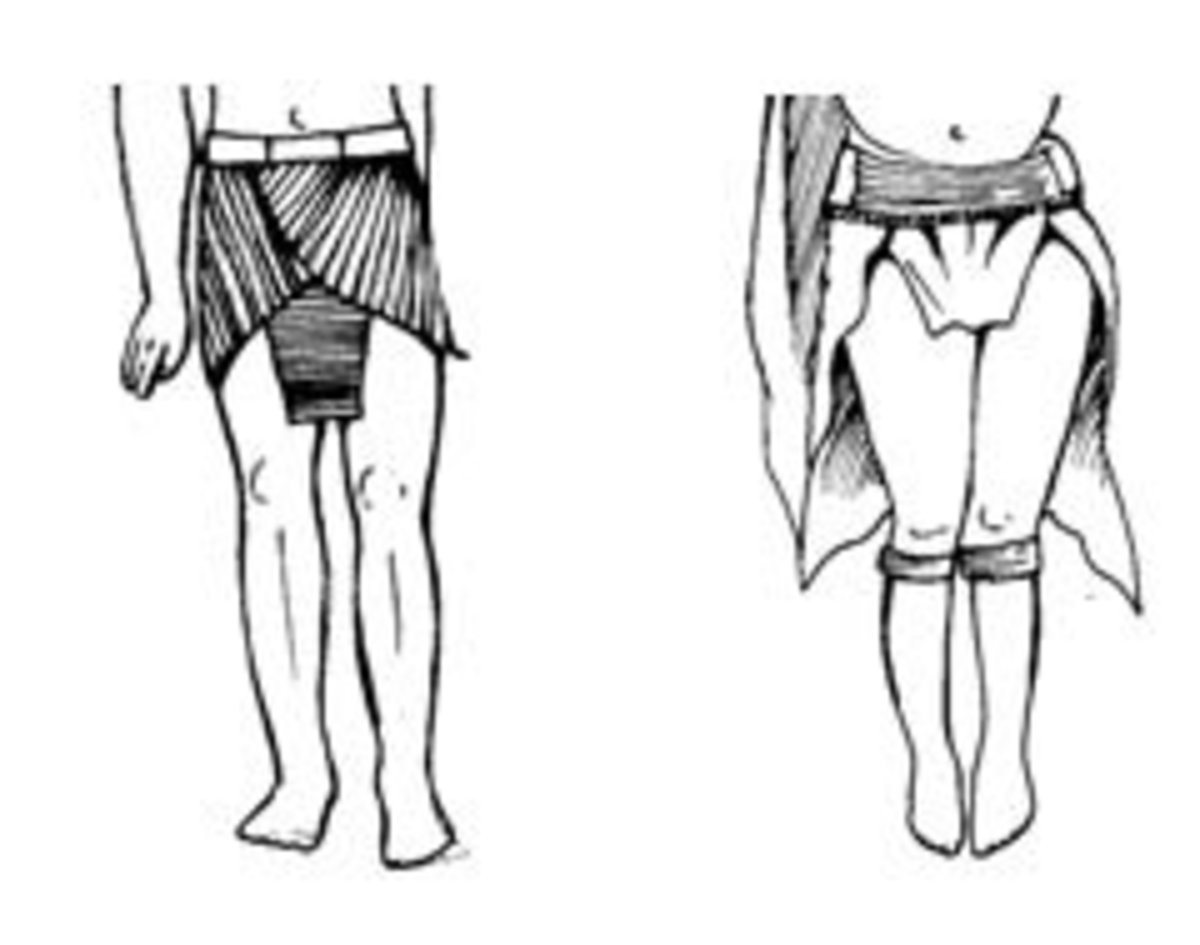Dr Jonas Salk | Polio Vaccine | Nobel Peace Prize Recipient | Founder of the Salk Institute for Scientific Research
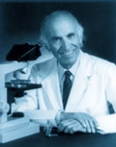
Dr. Jonas Salk of the Salk Institute
When Dr. Jonas Salk envisioned the idea of the Salk Institute for Biological Studies, it was with the idea of creating a vibrant, intellectual community, dedicated to pursuing the kinds of scientific achievements that had made him an international figure only five years before with the discovery of the Polio vaccine.
Quick Poll: Fan or no?
Are you a fan of Dr Jonas Salk and/or his work?
Until 1955, when the Salk vaccine was introduced, polio was considered the most frightening public health problem of the postwar era. Annual epidemics kept getting worse and victims were usually children. By 1952 it was killing more of them than any other communicable disease with over 57,000 cases reported that year. The "public reaction was to a plague," said historian William O'Neill. "Citizens of urban areas were to be terrified every summer when this frightful visitor returned." As a result, scientists were in a frantic race to find a cure. President Franklin D. Roosevelt was the world's most recognized victim of the disease and founded the institute to fund and create a vaccine.
In 1963, he founded the Salk Institute for Biological Studies in La Jolla, California, which is today a center for medical and scientific research. He continued to conduct research and publish books, including Man Unfolding (1972), The Survival of the Wisest (1973), World Population and Human Values: A New Reality (1981), and Anatomy of Reality (1983). Dr. Salk's last years were spent searching for a vaccine against AIDS. He died on June 23, 1995 at the age of 81. Source: Wikipedia
Doctor Jonas Salk Links, Websites, & Resources
- The Time 100 The Most Important People of the Century
- Jonas Salk Trust
- Salk Institute for Biological Studies
- Documents regarding Jonas Salk and the Salk Polio Vaccine, Dwight D. Eisenhower Presidential Library
- 1985 Open Mind interview with Richard D. Heffer: Man Evolving...
- University of Pittsburgh Jonas Salk site
- Pittsburgh Post-Gazette feature on Jonas Salk and the Polio cure 50 years later
- The Salk School of Science (New York, NY)
- Patent US Patent 5,256,767 : Vaccine against HIV
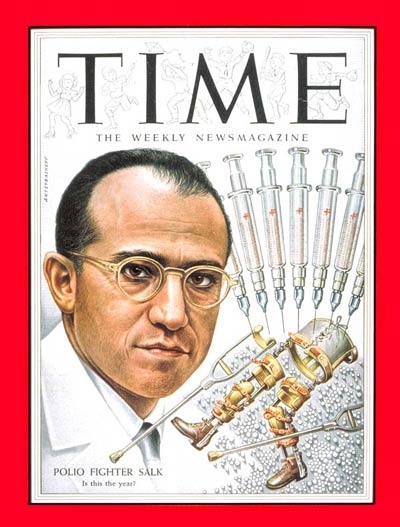
His first desire was to become a lawyer and only due to his mother's persuasion (which included her telling him he wouldn’t be good at it), he changed from a pre-law student to a pre-med student. During his first year in medical school, he was offered the chance to do research and teach biochemistry. He recalls this experience in the previously mentioned interview: At one point at the end of my first year of medical school, I received an opportunity to spend a year in research and teaching in biochemistry, which I did. And at the end of that year, I was told I could, if I wished, switch and get a Ph.D. in biochemistry but my preference was to stay with medicine. And I believe that this is all linked to my original ambition, or desire, which was to be of some help to humankind, so to speak, in a larger sense than just on a one-to-one basis. While attending the NYU School of Medicine, he heard two lectures that would change his life forever. Salk reflected on the lectures in 1990: In the first lecture, we were told that it was possible to immunize against diphtheria and tetanus by the use of a chemically treated toxin [to kill it]... In the very next lecture, we were told that in order to immunize against a virus disease it was necessary to go through the experience of infection. It was not possible to kill the virus... The light went on at that point. I said that those two statements can’t possibly both be true. One has to be false.[citation needed] In 1938, while still in college, Salk began working with Dr. Thomas Francis, Jr. on an influenza vaccine. In 1941, Francis was appointed the head of the epidemiology department at the newly formed School of Public Health at the University of Michigan, and Salk, who in 1942 won a research fellowship, followed him. Together they worked to develop an influenza vaccine at the behest of the United States Army. Salk advanced to the position of assistant professor of epidemiology and continued his work on virology. After medical school, Salk first worked as a staff physician at the Mount Sinai School of Medicine in New York City. Later, he worked for Dr. Francis's virus lab at the University of Michigan in Ann Arbor. In 1947, he moved to Pittsburgh, where he led the Virus Research lab at the University of Pittsburgh. During the 1950s, Salk developed, tested and refined the first successful killed-virus polio vaccine, using inactive (dead) poliovirus cells that were injected into the body. In 1955 he began immunizations at Pittsburgh's Arsenal Elementary School in the Lawrenceville neighborhood. (Hilary Koprowski had already in 1950 initiated the use of an oral attenuated-live-virus polio vaccine, which would prove to be the future of polio immunization.) In 1965, Salk struck out on his own, leaving the University of Pittsburgh and establishing the Salk Institute for Biological Studies in La Jolla, California, where the major focus of study was molecular biology and genetics. The first faculty included many distinguished members such as Jacob Bronowski and Francis Crick. Salk directed the institute until his retirement in 1985. During Salk's last years, he co-founded The Immune Response Corporation with Kevin Kimberlin to search for a vaccine against AIDS, and patented a p24- vaccine as "Remune". Salk died on June 23, 1995 in La Jolla, CA, at the age of 80 due to heart failure. Image & Article Source
Jonas Salk Videos
Salk's vaccine was instrumental in beginning the eradication of polio, a once widely-feared disease. Polio epidemics in 1916 left about 6000 dead and 27,000 paralyzed in the United States. In 1952, 57,628 cases were recorded in the U.S. After the vaccine became available, polio cases in the U.S. dropped by 85-90 percent in only two years. Unfortunately, some drug companies manufactured contaminated polio vaccine containing live virus, and this error cost dozens of lives. However, the live-virus oral vaccine developed by Albert Sabin became the preferred alternative after a sometimes intense clash between the two scientists and their adherents. The Salk vaccine, which is injected, proved to be effective in sharply reducing the number of polio cases in the United States. A disadvantage to Salk's vaccine was that booster shots had to be taken periodically. The Sabin vaccine had the advantage of easier delivery and became accepted in the United States after the testing abroad. It was licensed in 1961 and eventually became the vaccine of choice in most parts of the world. The last indigenous case of polio in the U.S. was reported in 1991. Partly because of that fact, only inactivated, Salk-type polio vaccines have been recommended for use in the United States since 2000. The Salk vaccine was based upon plasmid DNA. Esther M. Zimmer Lederberg and Jonas Salk were colleagues and friends. However, Lederberg had expressed reservations concerning polio and the Salk vaccine. Esther Lederberg was quite well aware that from an epidemiological viewpoint it was possible that Salk's vaccine was not as effective as he thought. Specifically, the incidence of polio was noted to occur in waves. Thus, Lederberg wondered whether the marked reduction in polio cases was due to Salk's vaccine or the end of a wave of infection (and Salk's vaccine having little effect). Lederberg felt that Salk could have done more to elucidate this possible ambiguity had he kept better records. Image and Article Source
Polio Links, Resources, and Websites
- CGDev.org - 'Vaccines for Development', Center for Global Development
- PBS.org - 'People and Discoveries: Salk Produces Polio Vaccine 1952', PBS
- SFGate.com - 'Rogue virus in the vaccine: Early polio vaccine harbored virus now feared to cause cancer in humans', William Carlsen, San Francisco Chronicle (July 15, 2001)
- Documents regarding Jonas Salk and the Salk Polio Vaccine, Dwight D. Eisenhower Presidential Library
Doesn't that feel good?
We Squidoo for charity! One of the coolest things about Squidoo is the opportunity provided for lensmasters designate all or part of their proceeds to charity. Consider creating a lens today for a charitable cause.
Great Jonas Salk Stuff from Amazon
Consider Joining One (or all) Of Our Groups Today:
- Totally Awesome Tee-Shirts ~ Tee Shirts, Cafe Press, etc.
- Everything Photography ~ Anything Photo & Image Related
- Freebies ~ Yup, All Those Freebie & Savings Lenses
- Let's Party ~ Everything Party Themed.
- For The Good Of Squidoo ~ Charities, Lenses Supporting Good Things, & Involved Lensmasters
- Dance Group ~ Anything Dance Related
- TV Game Shows & Competitions ~ Self Explanatory
- Novelty Gifts ~ Anything Gifts Related
- Squidoo Everything How To ~ How-To & Educating Lenses
- About Anyone Group ~ SquidWho, Biographies, Lensographies, etc.
- Books, Magazines, & Anything Else Read ~ Anything Read!
- Duels, Dueling, Debates, & MonkeyBrain Arguments ~ Self Explanatory!
- Everything Green & Environment ~ Recycling, Going Green, Saving Stuff, etc.
- Home, Garden, & Anything Housing ~ Self Explanatory!
- Humor, Jokes, Comics, Fun, & Goofyness! ~ The Funny Stuff!
- Pop Culture & Celebrities ~ Current Events, People, and Places
- Everything Religious & Spiritual ~ Anything Spiritually Related
- Squidoo Lens Tips & Tricks ~ Squidoo Lensmastering
- Work At Home Group ~ Working From Home, The Self Employed, and Affiliates
- Everything Christian ~ The God Of The Bible Group
You do not need a Squidoo account to leave feedback, however,
consider signing up today and creating your first lens! It's a hoot!
